Why are we collecting stamps in our pilgrim passport on the Camino? The answer goes deeper than a simple administrative requirement for your credencial; it touches the core of what it means to be a pilgrim.
The Small Ritual that Changes Everything
It just remains really fun when you take out your pilgrim passport Camino and ask: “¿Tienes un sello para mi, por favor?” If you can speak Spanish, at least… 🙂 The hostess of the albergue smiles, grabs her stamp and carefully presses it into your credencial. The stamp is more than just proof that you’ve been here. It’s a connection with centuries of pilgrims before you.
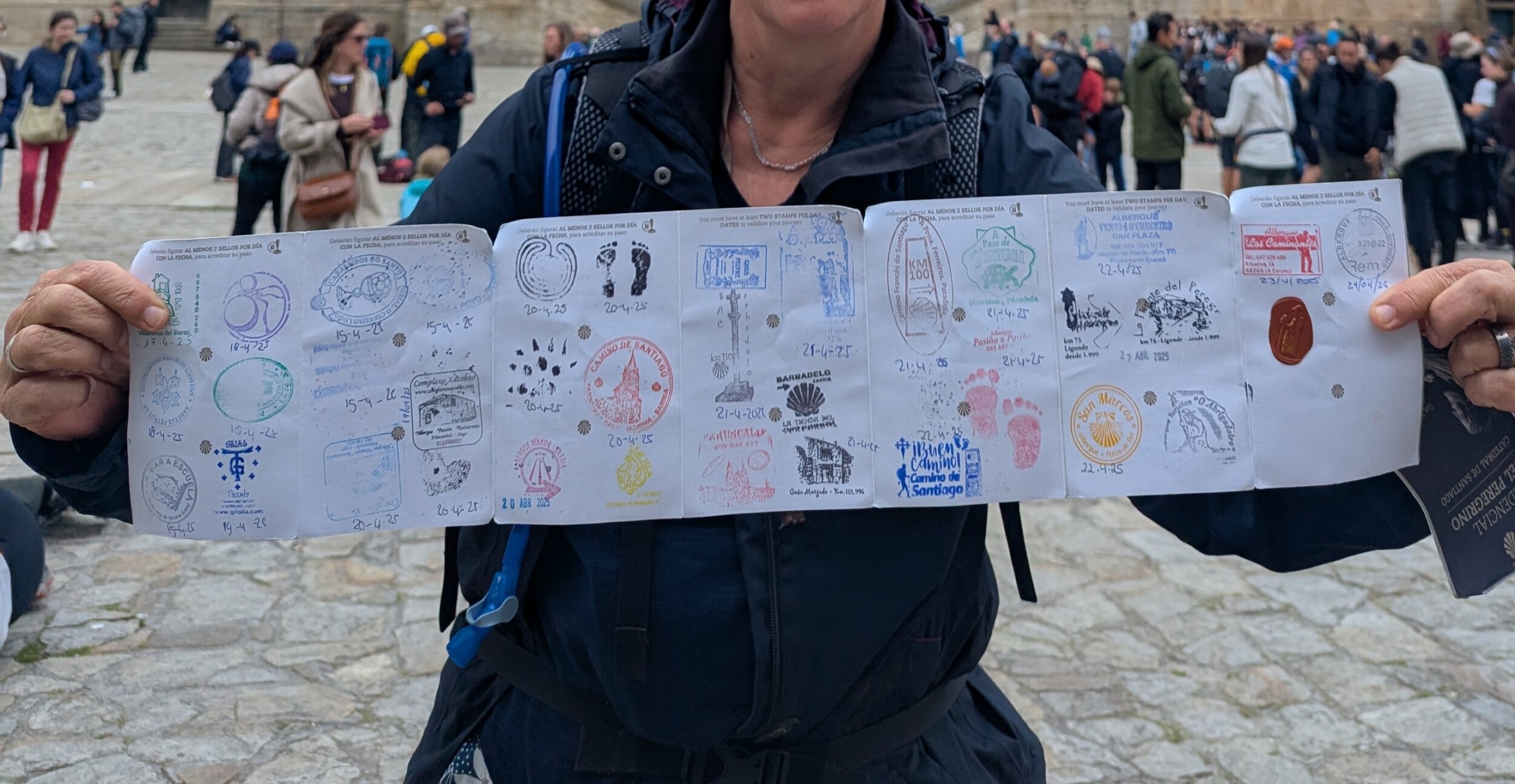
Why Are We Actually Collecting Stamps in Our Pilgrim Passport?
Superficially, the answer is simple: you need these stamps for your Compostela, the official certificate that proves you have completed the pilgrimage. Since 1989, you must walk at least 100 kilometers (or cycle 200 kilometers) and collect two stamps per day during the last 100 kilometers to earn this document. Since last year, the rule has even been relaxed, you no longer necessarily have to walk the last 100 kilometers, which should reduce the crowds on the busiest parts.
But those who only walk for that Compostela miss the real story.
A Tradition Born from Necessity
The stamp system has its roots in the Middle Ages, when pilgrims needed a form of ‘safe conduct letters’ to be able to travel freely along the dangerous roads to Santiago. In a time of roaming bandits and untrustworthy innkeepers, pilgrims were vulnerable. The credential functioned as a kind of passport that granted them safe passage.
Read more about this custom under point 4 in this post about surprising facts about pilgrims and their pilgrimage in the Middle Ages
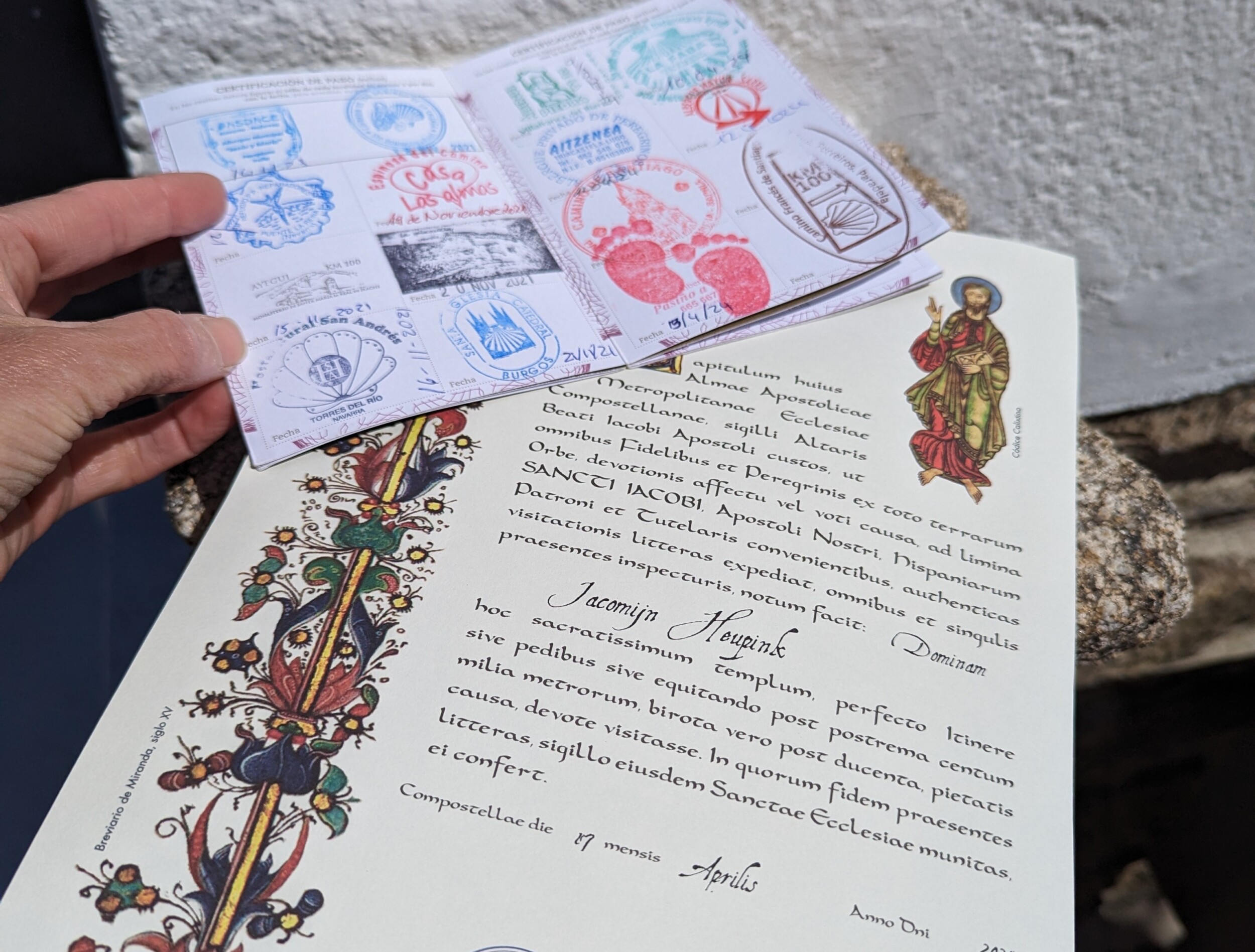
Initially, pilgrims used badges as proof of their journey, the famous shell for Santiago pilgrims. But these were too easy to counterfeit, which in the 13th century led to the introduction of the so-called “cartas probatorias”, proof letters that were the forerunners of the modern Compostela.
The very first known pilgrims were the Asturian kings Alfonso II and Alfonso III in the 9th century, who traveled from Oviedo to the newly discovered tomb of Santiago. Alfonso II’s route is now known as the Camino Primitivo, the “original way.”
More Than Administration: A Diary of Your Pilgrim Soul
But let’s be honest, the modern pilgrim passport Camino system is so much richer than that medieval necessity. Your credencial becomes a kind of visual diary of your pilgrimage. Each stamp tells a story, not only of where you’ve been, but also of the people you’ve met and perhaps the challenges you’ve overcome.
That little stamp from the monastery where you lit a candle. The stamp from the café where you sheltered from the rain and had a conversation with a fellow pilgrim who gave you just that advice you needed. The stamp from the small village church where you found a moment of silence. Some stamps are true works of art, carefully designed to represent the history and spiritual significance of that specific place.
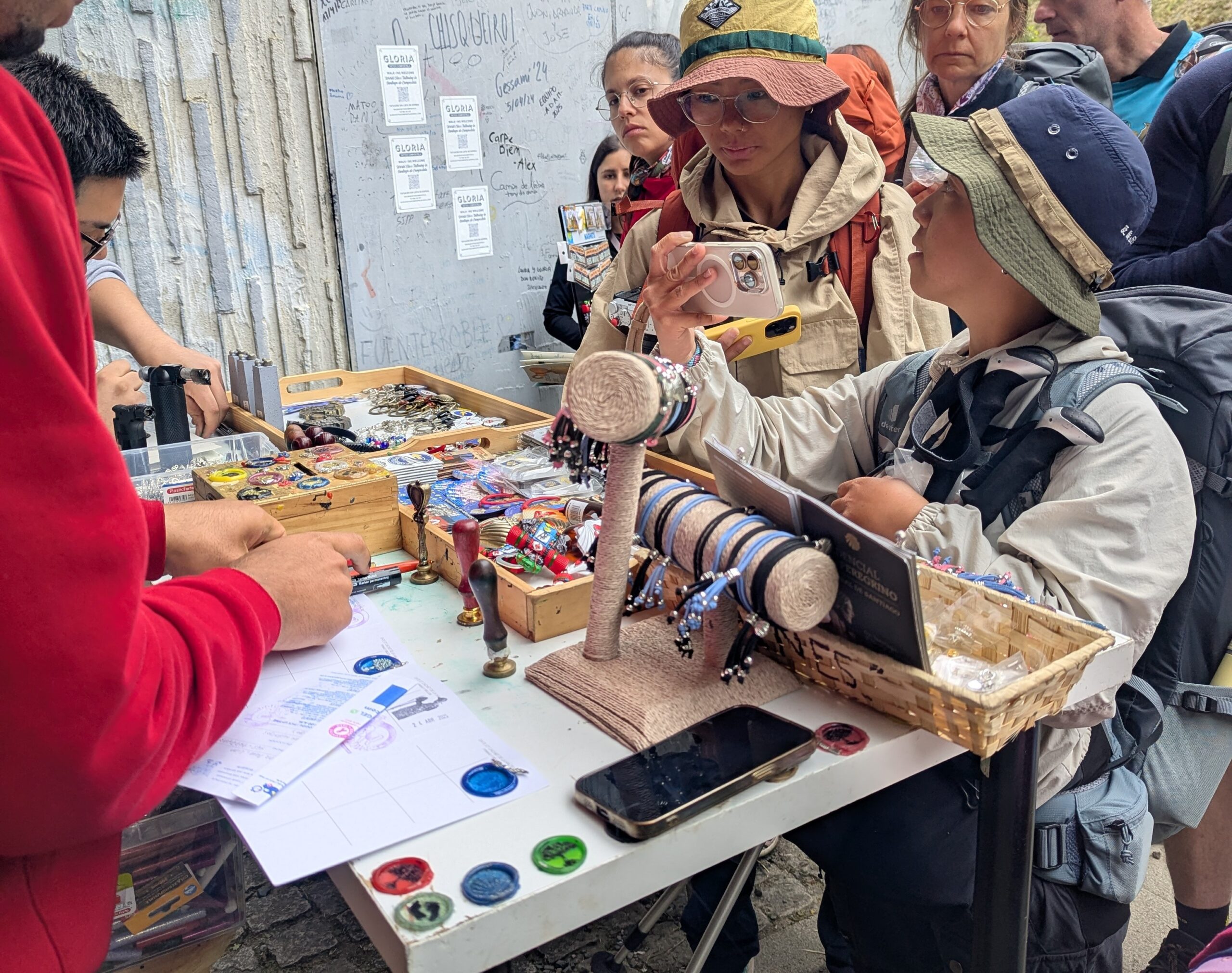
Where Do You Collect Stamps for Your Pilgrim Passport?
Stamps for your pilgrim passport Camino can be found everywhere along the route: in albergues, churches and monasteries, cafés and shops, town halls, post offices, even police stations. Some pilgrims become real stamp hunters, trying to collect a new stamp at every stop. It becomes a kind of game, a way to connect with the local community.
And yes, sometimes you have to pay for it, a small donation. But you get something in return! A unique little work of art that colors your passport and gives it personality. Some stamps are so special that pilgrims consider them real souvenirs, authentic works of art that mark your journey.
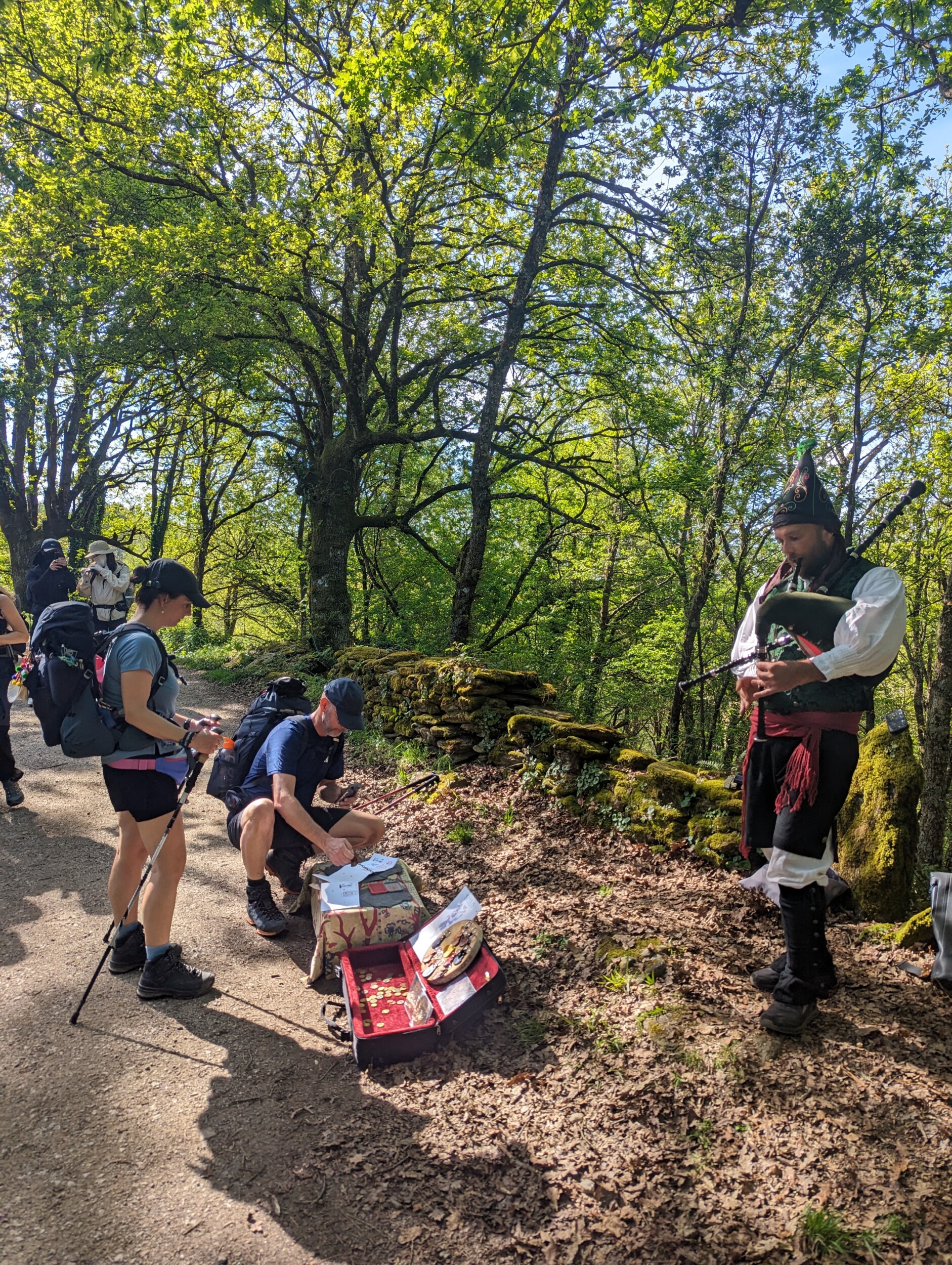
The Compostela: The End Result of Your Pilgrim Passport Camino
After weeks or months of walking, collecting stamp after stamp in your credencial, you arrive in Santiago de Compostela. You go to the pilgrim office at Rúa das Carretas 33, where long lines stand of people who, just like you, want to complete their journey. You show your pilgrim passport from your Camino, full of proof of your journey, your spiritual intentions are checked, and then you receive it: the Compostela.
This historical document, written in Latin, officially declares that you have completed the pilgrimage. But there’s more: you can also buy a “Certificado de Distancia”, a document that mentions your name in Latin and the exact distance you have walked.
These certificates, by the way, are an important source of income for the maintenance of the cathedral.
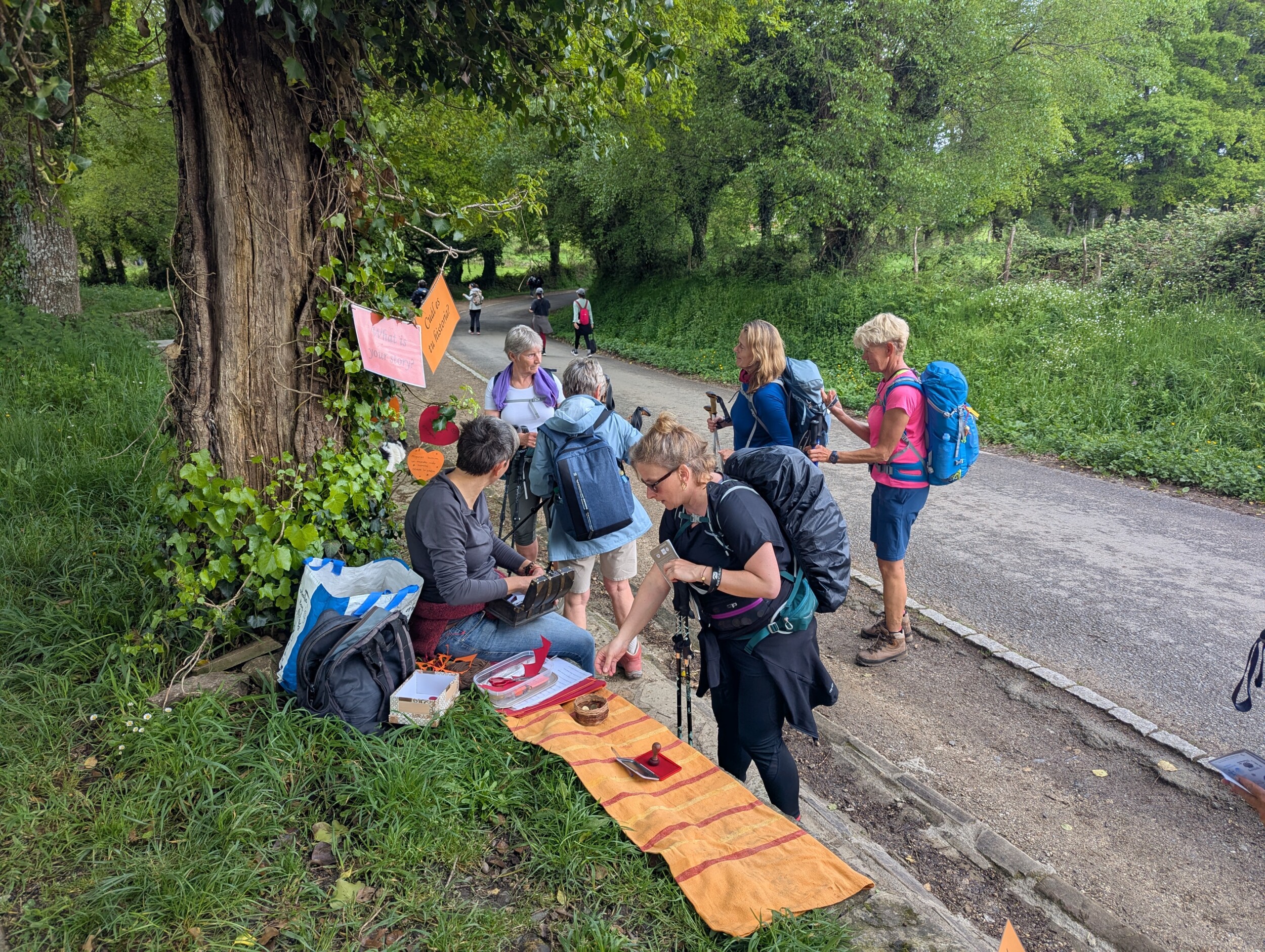
Two Different Certificates:
- Compostela (religious/spiritual): If you walk for religious or spiritual reasons, you receive the Compostela, the traditional religious certificate issued in Latin by the Church.
- Certificado (cultural/tourist): If your motivation is non-religious, you receive a different certificate. This document has a different format and the text is in Spanish, not Latin.
Why Your Pilgrim Passport Camino is So Powerful
In our digital world, where everything is photographed and as fleeting as an Instagram story, the physical stamping of your pilgrim passport Camino has something wonderfully old-fashioned and authentic. It forces you into real contact; you can’t just take a photo and walk on. You have to ask, wait, interact. It marks not only your physical journey, but also your spiritual and personal growth during the pilgrimage.
The daily stamping of your credencial becomes a ritual, a moment of reflection. Then you lie in the evening in your hostel bunk bed and look at it again: Where have I been today? What have I seen, felt, learned? That stamp is not only proof of presence, it’s proof of your life on the Camino.
Life When it Was Simple
And perhaps that touches the core of why we become so attached to this system. Your pilgrim passport becomes a travel companion that collects experiences, encounters and reflections along the Camino de Santiago. It reminds us of a time, albeit only a few weeks, when life was simple. When you only had to walk, eat, sleep, and yes… collect stamps.
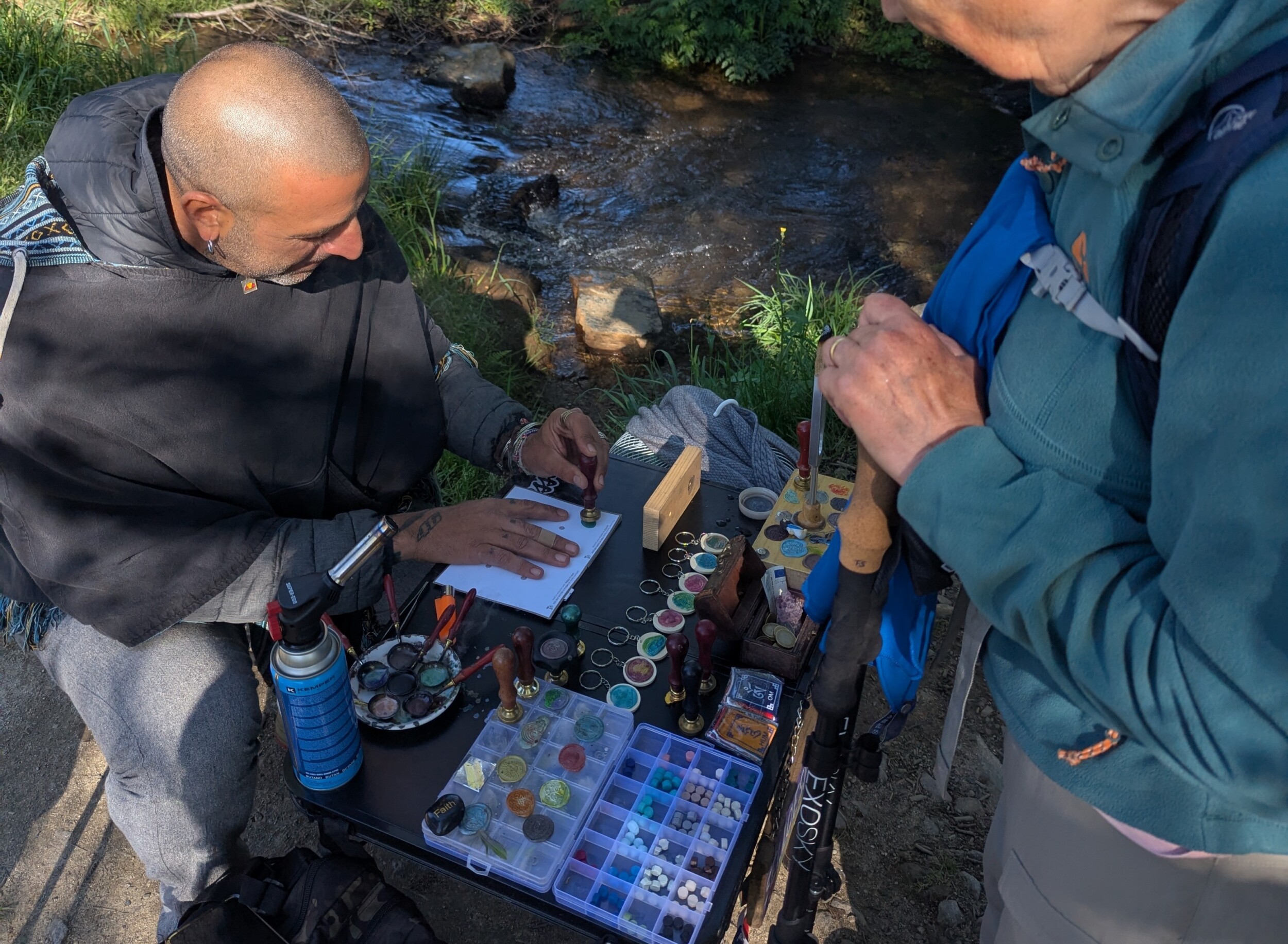
In that simplicity lies precisely that beauty. In those small, daily rituals lies precisely a deep meaning. And when you open your passport years later and see those collected stamps, you return to that time when everything that mattered fit in a backpack, and the road stretched out before you day after day.
The pilgrim passport Camino is much more than administration. It’s a bridge between past and present, between the practical and the spiritual, between the pilgrim you were and the one you have become. Each stamp in your credencial is a memory stone on your path to Santiago… and to yourself.
¿Buen Camino? Yes, especially because along the way we take the time to pause, ask for a stamp, and realize that we are part of a tradition that has been bringing pilgrims home for more than a thousand years.
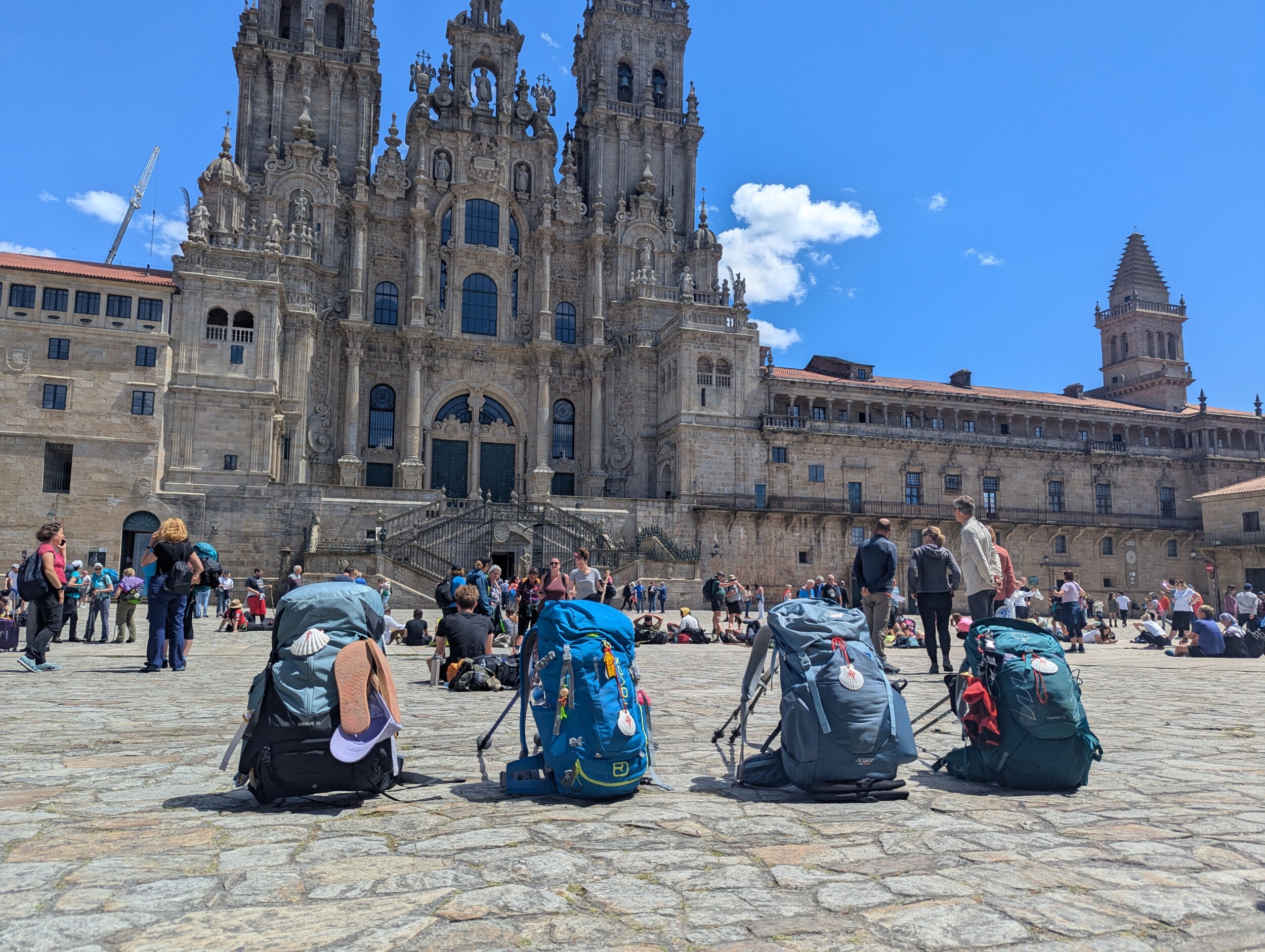
Have you been inspired after reading this article to walk yourself? But don’t want to go completely alone?
Come with me on a pilgrimage and walk the last 200 km in a small group.
